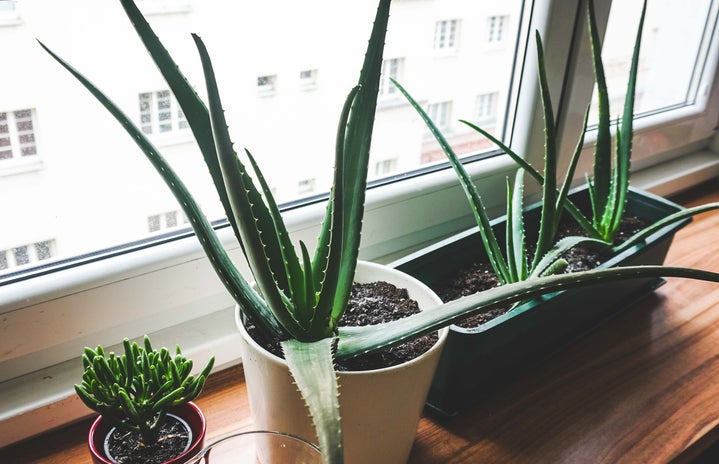Collecting a variety of houseplants can get to be a fairly pricey hobby, but it doesn’t always have to break the bank. Personally, growing up around someone with an insane green thumb has not only taught me a thing or two about keeping plants alive and healthy, but also how to multiply the plants already in possession using propagation. Knowing how to propagate your favorite plants can drastically increase the greenery in your environment on a very low budget.
What is Propagation?
Propagation, simply put, is the process of creating new plants. This can mean from a variety of sources, including seeds, cuttings, or other plants. Propagation can occur sexually, generally by seed or spore. During sexual propagation, the egg is fertilized by the pollen, which produces a seed that will grow into a new baby plant, carrying both of the characteristics of the parent plants. Sexual propagation is considered the only method that creates new varieties of plants, and it is often the easiest and cheapest way to propagate plants, which makes its use attractive primarily to farmers. Typically, buying and starting from seed is less expensive than purchasing a cutting.
Propagation can also occur asexually, which also has the name “vegetative propagation” because it involves producing new plants through the vegetative parts of one original plant. These vegetative parts include the roots, leaves, stems, bulbs, and tubers. Since these new plants are growing directly from a single parent plant, there is no new exchange of genetic materials. This results in an identical copy, known as a clone. Advantages of asexual propagation include allowing plants that do not produce seeds to be grown from a single parent, meaning that pollination or cross-pollination is not necessary. Similarly, asexual propagation is faster than sexual propagation in restoring generations of foliage.
How to Propagate
Since sexual reproduction is mainly used in agricultural practices, we are primarily going to focus on how to propagate your plants using asexual reproduction, which can take place using a few different methods. Some of these methods include:
- Cutting: A cutting is when the vegetative parts of the plant are severed from the parent plant and rerooted in an attempt to grow a whole new plant. Common types of plant cuttings are stem cuttings, where the length of the stem is cut off, dipped in a rooting agent (I like to use cinnamon) placed in a rooting medium, such as water or soil until roots have developed a bit more. The process of leaf cuttings is similar to stem cuttings, where the leaf stalk is severed from the parent plant and is again placed in a rooting medium. Tip cuttings are slightly different in the way that they are more commonly used in multi-stemmed plants, where a tip no more than 15cm in length is cut from the parent stem, just below the node.
- Division: It is possible for some plants to grow with several stems and their own independent root systems attached to each one. Since these plants should already have strong roots, they simply need to be separated from their parent plant to create a new plant. If the stems are not too intertwined or conjoined, the roots should gently be able to be pulled apart, but a sharp knife may be necessary in order to divide the individual stems. Once the stems have been separated, they are free to be potted by themselves.
- Layering: If your plant is one that has several stems growing, but has not yet formed its own independent root systems, layering is the method that allows for the roots to grow while the stems are still attached to its parent plant. There are several types of layering, but they all generally follow the same process of manipulating the stem or several parts of the stem from the parent plant so the stem is submerged in the rooting medium. A thin slit is made on the side of the stem that is in contact with the rooting medium so that roots are able to grow. After roots have developed, the stems are able to then be divided.
- Grafting and Budding: Grafting and budding is the form of propagation where different plant parts are joined together to encourage growth as one plant. Sometimes grafting and budding are used as a last resort if the plants are not rooting as well as cuttings, or their root systems are considered less than optimal. In grafting, the upper part of one plant is cut and shaped to fit into the root system of another plant, kind of like a puzzle. In budding, a bud is severed from one plant and is grown on another. Grafting and budding are typically the most difficult way to propagate plants and is often only opted for by advanced horticulturists.
Does It Work With Every Plant?
It is extremely important to know the names of the plants that you have, as well as how to care for them properly. While propagation works well with most plants, I cannot guarantee first-time success for unique plants. It is vital to do more personal and specific research on which method will be most effective in cloning the plants in your possession.
For example, oftentimes plants that have woodier, stalkier stems, such as Aglaonema grow more successfully using stem cutting techniques and can be placed in a rooting medium of either pure water or soil, but a different plant may very well flourish using a tip cutting method and a different rooting medium of a mix of soil and perlite. I encourage you to do some research about the specific type of plant you want to propagate, and what technique will be the most successful.
With this information, you too should feel confident enough to look into the most efficient ways to take advantage of your plants. Propagation is a very beginner step that only requires a bit of care and patience, and with these methods, your indoor jungle will prosper in no time.


